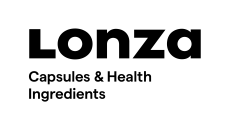Acatris and ADM form flax lignan association
have founded a new trade association to support the science behind
standardized flax lignan ingredients and protect them from the risk
to their credibility posed by unscrupulous suppliers.
The makers of LinumLife Extra and Beneflax respectively, they are claiming that there is a need for standardized methods for analyzing and labeling products, and for a "centralized clearing house" for information on health effects and published clinical studies.
Membership of the Flax Lignan Association is open to other interested, qualified flax lignan manufacturers.
Laurent Leduc, president of Acatris' North America health division, said: "The formation of this association is vital to standardized flax lignan ingredient producers as more companies enter the flax lignan marketplace."
The market for flax lignans grew by 20 percent in 2004, and the specialist retail market is believed to be worth around $50 million at present.
The association is wary that there may be some unethical companies operating, that either exaggerate the flax lignan content of their products or the associated health benefits.
Lignans are phytonutrients that occur naturally in fruits, vegetables, seeds and unrefined grains. The main lignan in flax seed is SDG (secoisolariciresinol diglucoside); Acatris' LinumLife Extra is standardized to 20 per cent SDG.
There is evidence that they may have a beneficial effect on prostate health, bone health, breast health, menopause symptoms, heart health, hair loss, acne and inflammation. This is believed to be due to their conversion to the phytoestrogen enterolactone within the gastrointestinal tract.
But flax lignans may face a challenge from a newcomer to the market - Linnea's HMRlignan (7-hydroxymatairesinol) from Norway spruce bark, which was presented to the industry for the first time at the recent SupplySide West trade show.
HMRlignan is said to be suitable for stand-alone or multi ingredient supplements as only a small dose is needed - just 10 to 40mg to elevate the enterolactone level to the same degree as three tablespoons of lignans from unground flax seed, and with higher bioavailability.
This economy in formulation knocks down the daily dosage cost to around 30 to 40 percent that of other sources of lignans.
The bulk of the human research into the effects of lignans conducted to date has used flax lignans, but Linnea draws particular attention to two animal studies indicating that HMR could impact the growth of mammary tumors and hormonal responses, and could inhibit the development of prostate cancer (J Steroid Biochem Mol Biol 2005 Feb;93(2-5):209-19 and Urol Oncol 2005 Sep-Oct;23(5):380-1).
Linnea plans to continue its own research program through 2006, and the next stage is human clinical trials.
Linnea VP marketing Robin Ward told NutraIngredients-USA.com that lignans are "the Western equivalent of isoflavones in the diet". However natural lignan content in food has fallen due to over-processing, which means that there is an opportunity for them to be dosed back into bread and cereal products.
He added that his company would like to carve out a five percent share of the flax lignan market.
But Leduc is yet to be convinced that HMR Lignan is as effective as flax lignans. "There have never been any studies using SDG and HMR side-by-side, showing that consumers will get the same benefit," he said.












